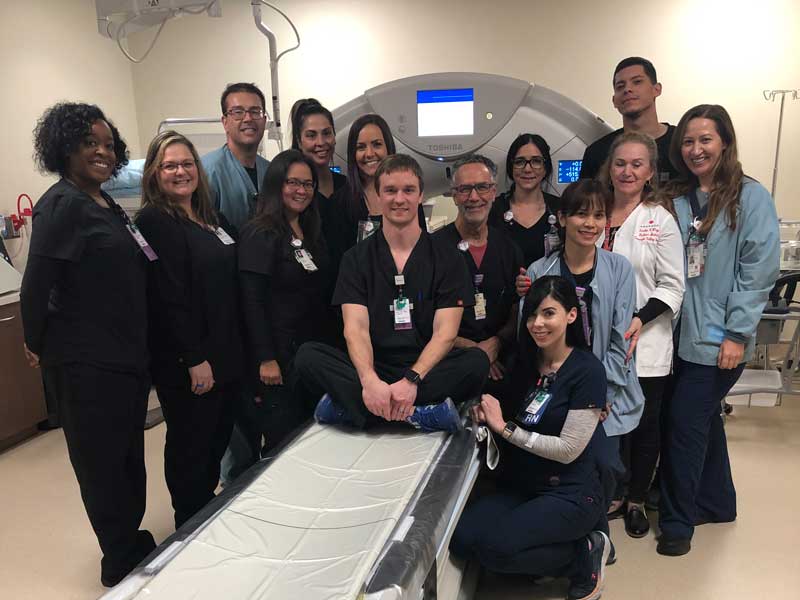Diagnostic Imaging Services
Temecula Valley Hospital offers a wide variety of radiology services, including:
X-ray
An X-ray image is produced when a small amount of radiation passes through the body to expose sensitive film on the other side. The ability of X-rays to penetrate tissues and bones depends on the tissue's composition and mass. The difference between these two elements creates the images.
Computed Tomography
Computed tomography (CT) shows organs of interest at selected levels of the body. They are the visual equivalent of bloodless slices of anatomy, with each scan being a single slice. CT examinations produce detailed organ studies by stacking individual image slices.
Nuclear Medicine
As an integral part of patient care, nuclear medicine is used in the diagnosis, management, treatment and prevention of serious disease. Nuclear medicine imaging procedures are often able to identify abnormalities very early in the progression of a disease.
Learn more about nuclear medicine →
Interventional Radiology
Interventional radiology is a subspecialty of radiology in which physicians use imaging equipment to perform minimally invasive procedures for both diagnostic and treatment purposes.
Learn more about interventional radiology →
Cardiac Catheterization
Cardiac catheterization offers precise evaluation of your heart’s blood vessels and pressures, determining when you need treatment and when you do not. We use cardiac catheterization to accurately diagnose the cause of heart-related symptoms.
Learn more about cardiac catheterization →
Ultrasound
This diagnostic procedure tracks changes in a patient's cardiac output and fluid volume. These are critical indicators of how well the heart is transporting blood and oxygen to the organs.
Cardiac Imaging
There are various imaging tests available to help diagnose and treat heart conditions. These include echocardiogram, transesophageal echocardiogram (TEE), Holter and event monitors, electrocardiogram (EKG) and loop recorder.
Learn more about cardiac imaging →
Magnetic Resonance Imaging (MRI)
Magnetic resonance imaging (MRI) uses radio waves and a strong magnetic field to create clear, detailed images of internal organs and tissues. Since X-rays are not used, no radiation exposure is involved.
Neurological Imaging
An electroencephalogram (EEG) is used to diagnose neurologic diseases, such as seizures and epilepsy. The test measures the electrical activity of the brain waves.
Hear from Our Imaging Supervisor

